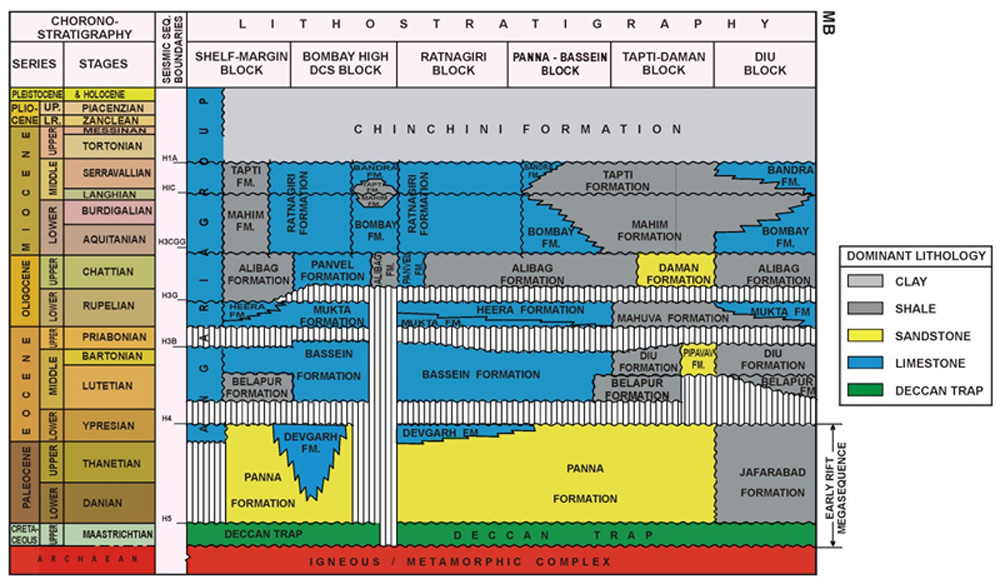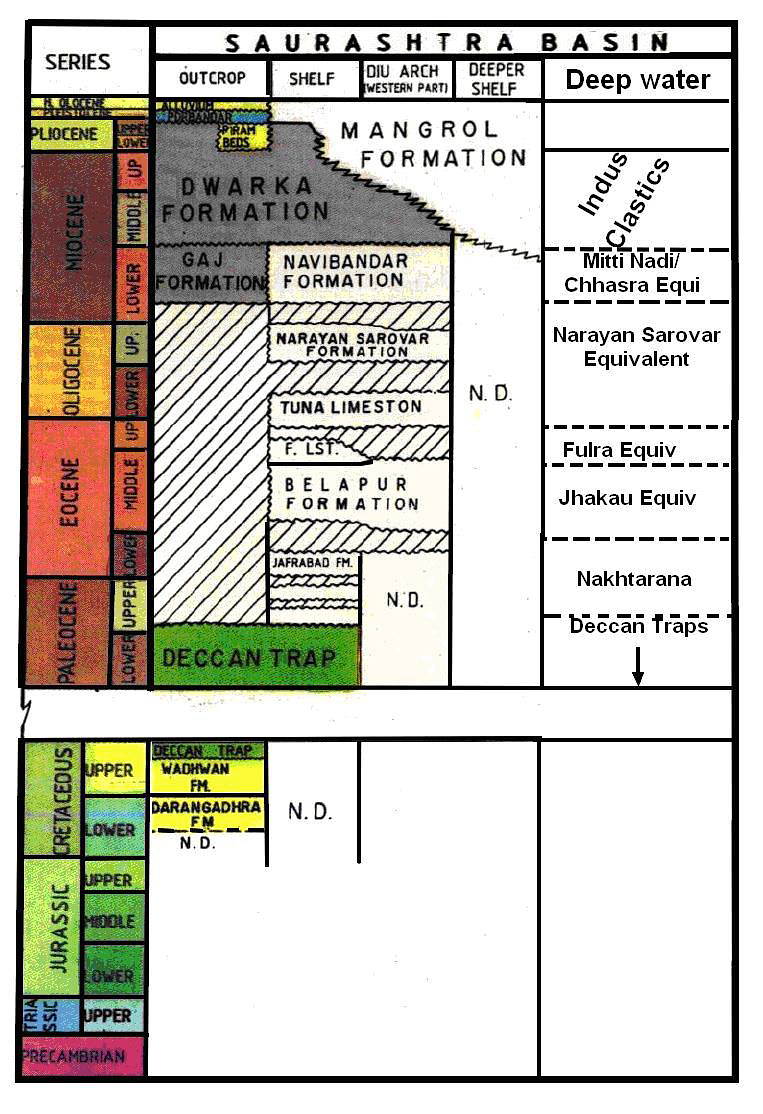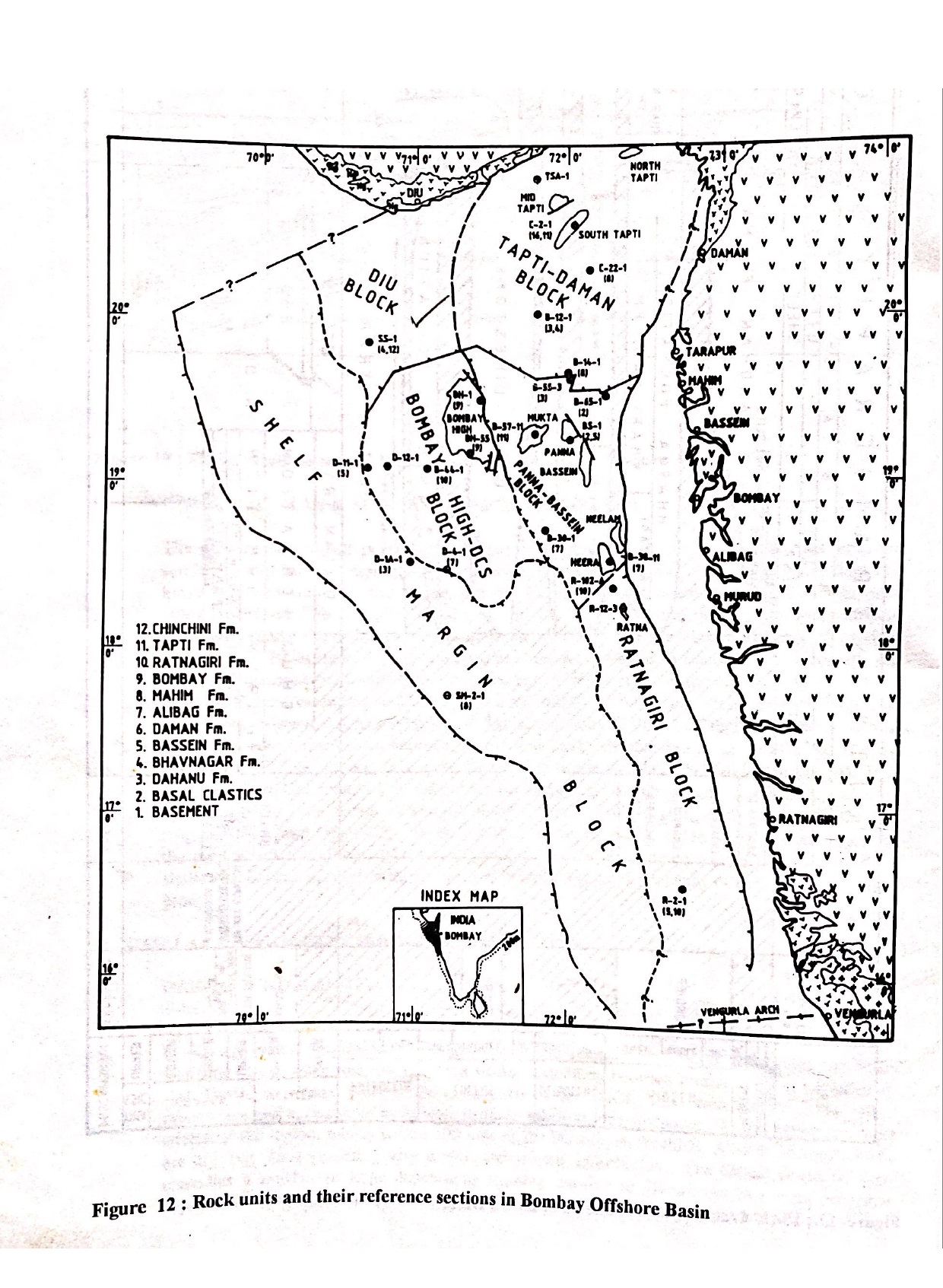Belapur Fm
Type Locality and Naming
SUBSURFACE: Its type section is in Well B-12-1, interval of 3024 to 3428 m. [Original Publication: Zutshi, P.L., Mittal, S.K., and Shah, L., 1993: Lithostratigraphy of Indian Petroliferous Basins, Document IV, Kutch Saurashtra Basin, KDMIPE, ONGC Publication, pp 1-50.]. Reference well: Well OS-2-G-1, interval of 1587 to 1700 m.
[Figure: Lithostratigraphy in Mumbai Offshore blocks (from NDRDGH.gov.in; after Jitendra Misra, 2009)]
Lithology and Thickness
Calcareous shale/ claystone with a limestone marker bed at the bottom. It is 424 m thick in type section well in Saurashtra Basin; in well OS-2-G-1 it is 61m. In Mumbai Basin, it is described as clay-rich with occasional carbonate bands and a few sand stringers and argillaceous carbonates and shales. 303 m (thick) on Raju's chart. Indicated on regional stratigraphic column of Mumbai offshore of Dr. Raju as having a lower limestone and an upper claystone.
Relationships and Distribution
Lower contact
In Mumbai offshore, indicated as overlying (unconformable) on the Panna Fm (partial inter-tonguing of this clay-rich facies with the sand-rich Panna Fm. In Saurashtra Basin, lower boundary is unconformable with the Jafarabad Fm (Jafrabad Fm)
Upper contact
Indicated as underlying Heera Fm, Diu Fm, or Pipavav Fm, depending on position within basin.
Regional extent
Saurashtra Basin continuing to Mumbai offshore
GeoJSON
Fossils
Fasciolites- Lokhartia alvelata- Nummulites diokartae, N. burdigalensis- Lokhartia hunti pustulosa, O. beckmanni, Discorbinus- Discocyclina, Globigerinatheka kugleri- S. frontosa- boweri.
Age
Depositional setting
An inner-middle neritic environment of deposition is inferred for the formation.
Additional Information


